Two-year renovation project has engaged locals, boosted civic pride, empowered women
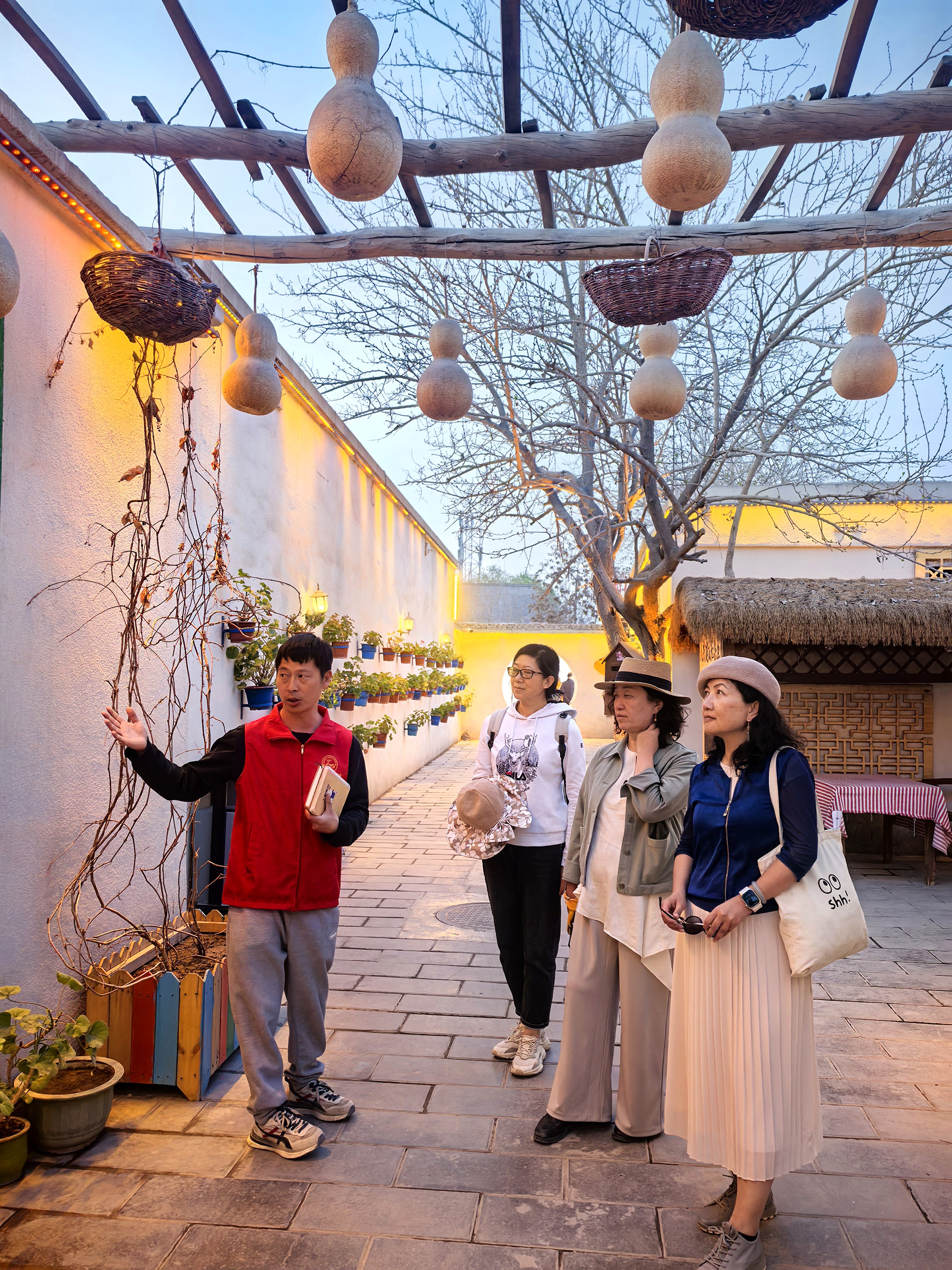
At Abudulkadeer Memetmin's teahouse there are no lavish decorations — only timeworn tables and big bowls visitors can sip tea from for only 2 to 5 yuan ($0.28 to $0.70).
Located in Qiuci Alley in the Xinjiang Uygur autonomous region's southern Kuqa city, a bowl of the beverage at "Grandpa's Tea House" is often accompanied by the strumming of the dutar — a traditional two-stringed musical instrument — and the sight of locals enjoying a game of cards.
"Some elderly friends spend the whole day sitting in the room, playing, chatting, drinking tea — they are here not just for the tea, but for the company," said 64-year-old Abudulkadeer. "People who come here are mostly retired, or tourists who want a place to rest. The prices are low and everyone is happy," he said.
READ MORE: Xinjiang's sands reveal fascinating finds
In 2021, Abudulkadeer retired from his work as a truck driver. After the local government launched the renovation of Qiuci Alley in May 2023, he decided to turn his home into a teahouse.
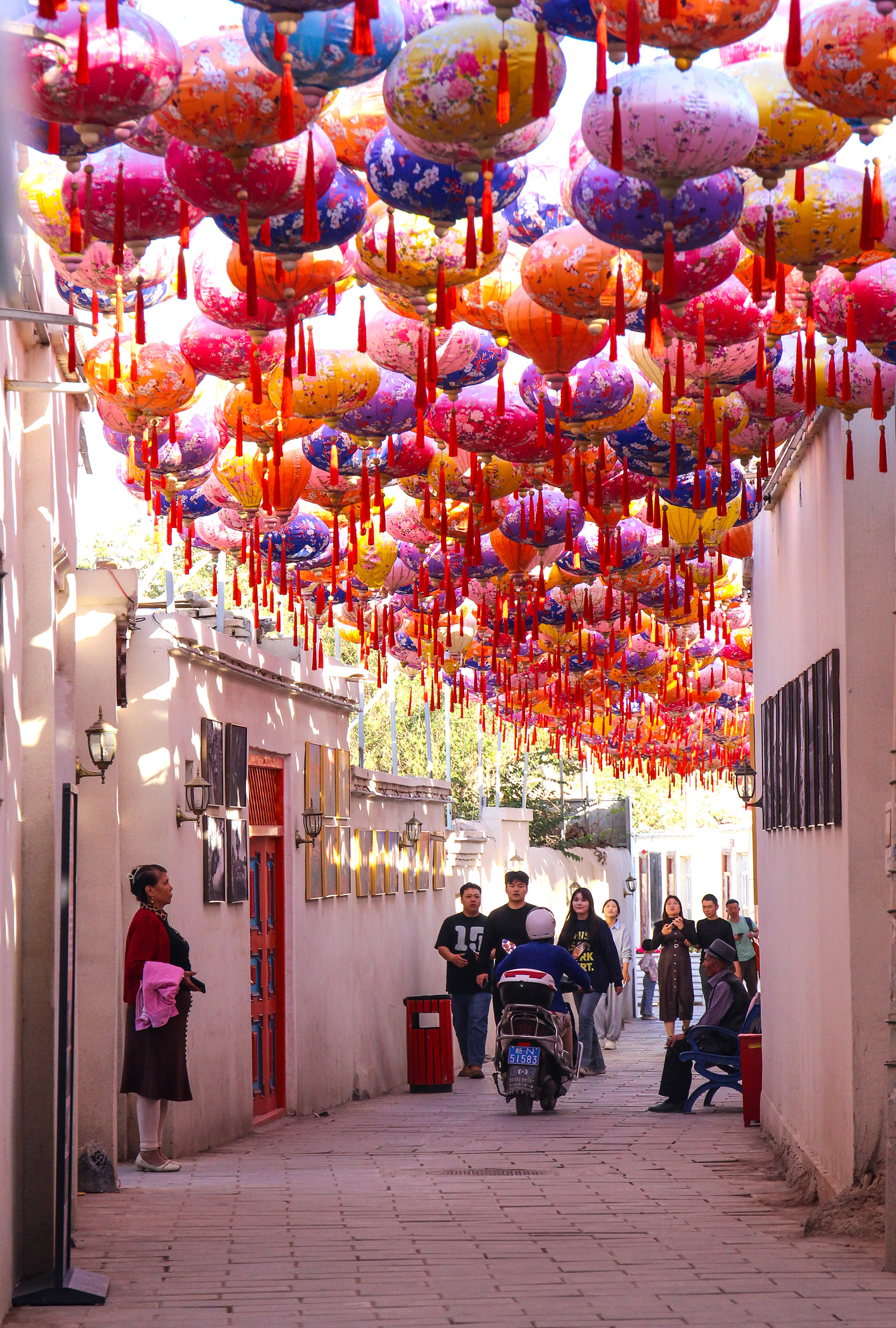
Alley reborn
Kuqa, located in Asku prefecture, was known as Qiuci State in ancient times. The city-state, which came into being in the second century BC and existed for more than 1,000 years, was one of 36 states in the Western Regions, a term used during the Han Dynasty (206BC-220AD) for the areas west of the Yumen Pass, including present-day Xinjiang and parts of Central Asia.
As a nationally recognized historical and cultural city, Kuqa boasts abundant cultural and tourism resources.
Qiuci Alley, located in Sakesake subdistrict, is the best-preserved block in Kuqa's old town that retains the street layout from the late Qing Dynasty (1644-1911) and the Republic of China (1912-1949).
Walking along the 1.2-kilometer alley, tourists are captivated by brightly colored doors adorned with intricate patterns, diamond-shaped lattice windows, walls decorated with porcelain plates, ancient courtyards, and roadside flowers.
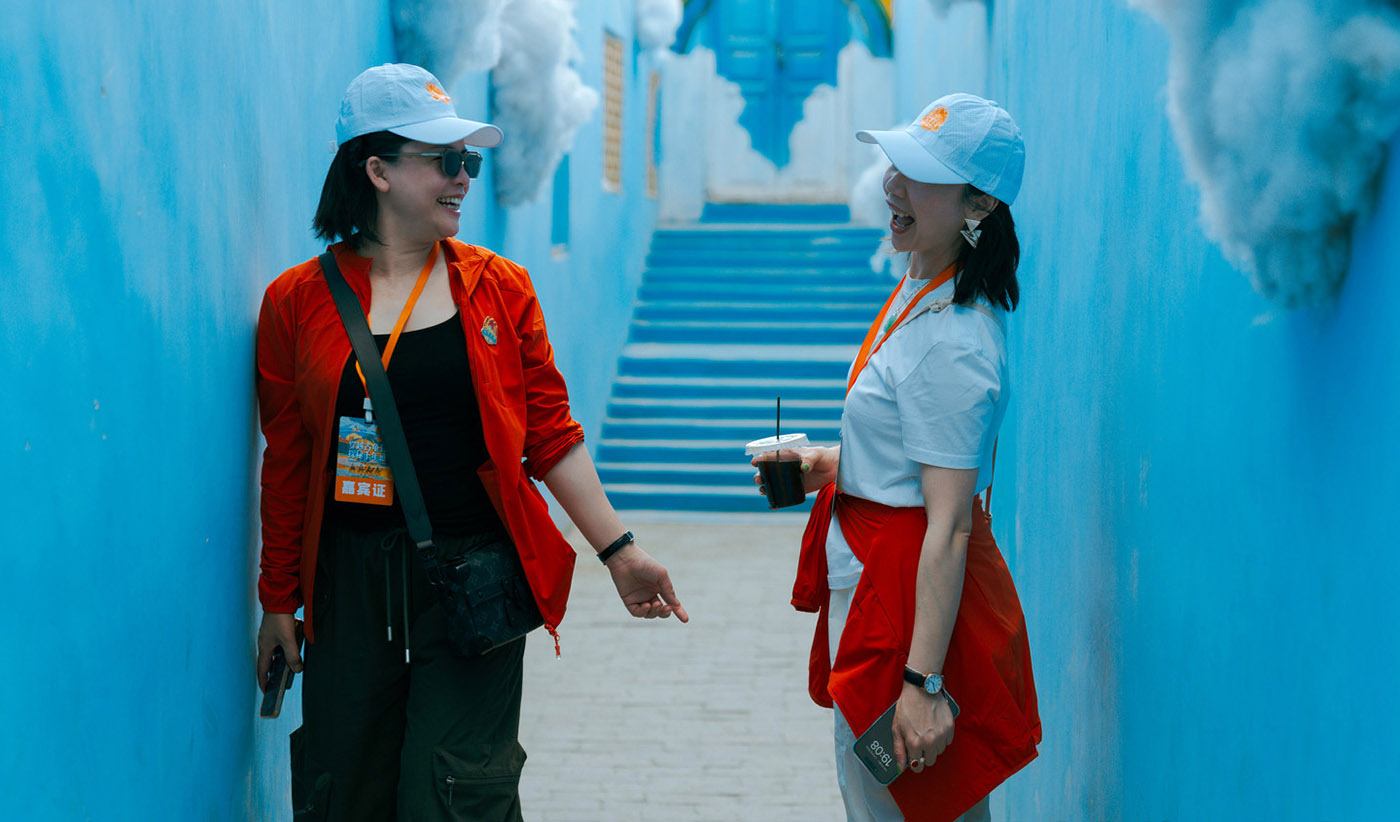
But two years ago, it was a place of bumpy paths, crumbling walls, and piles of debris and garbage. Most of the houses in the alley were made of timber and earth and in a state of disrepair.
The renovation project aimed to clear debris, level the roads, and beautify the streets. Instead of demolishing structures, however, basic infrastructure such as water and electricity was improved and the original buildings were preserved.
Over 4,000 residents participated in the renovation work. They volunteered to help and donated cherished belongings such as dishes and bicycles to decorate the alley, said Yang Tingting, publicity officer of the Sakesake subdistrict.
"Before the renovation, the road was bumpy and there weren't any streetlights," Abudulkadeer recalled. "I didn't even dare go out. Now, the road is smooth, and there are lights and even decorations. The environment is so much better and more tourists are coming to my teahouse."
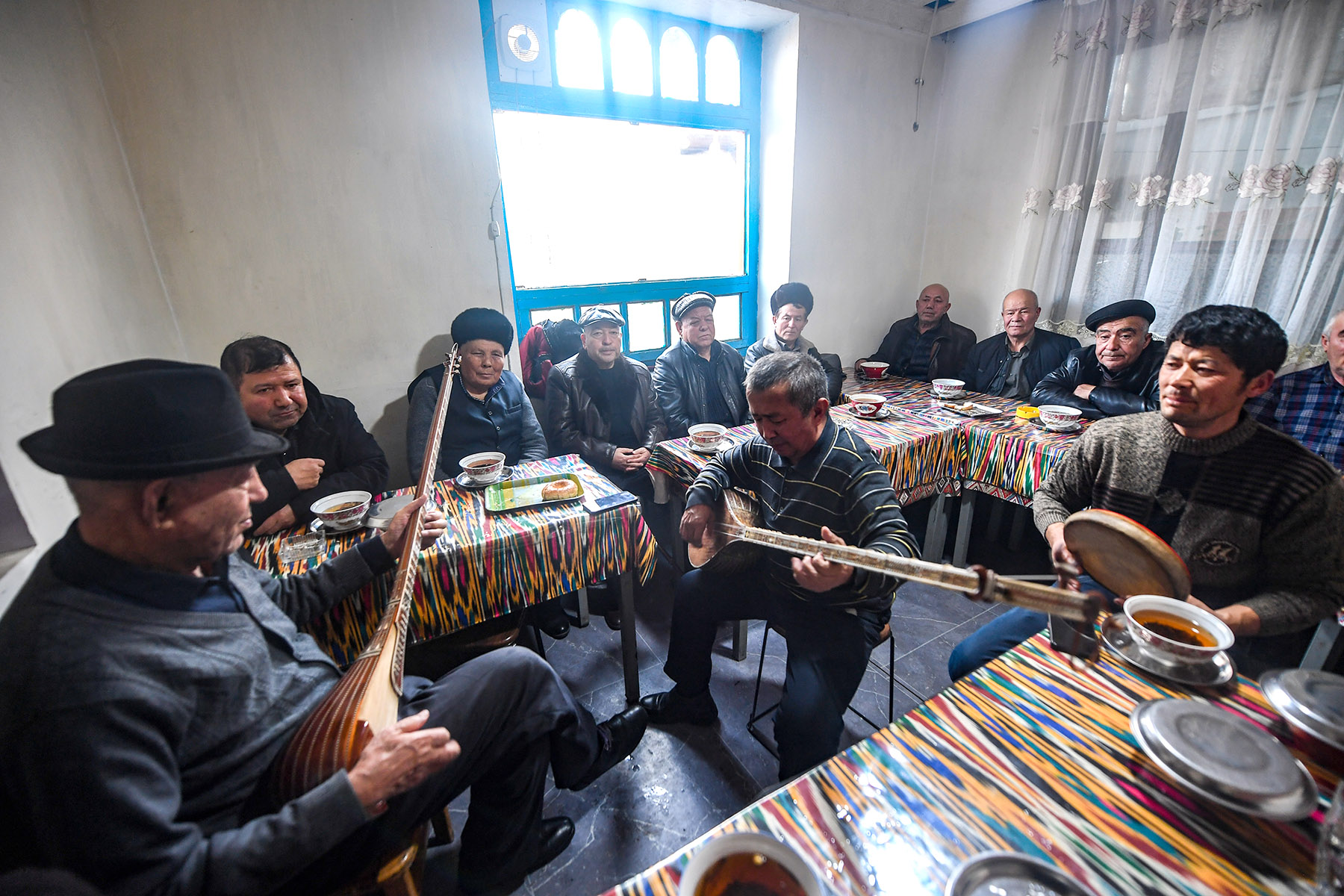
Tourism boosted
Improvements to building facades, decorative displays, and the collection and exhibition of ancient artifacts have all helped turn the once-overlooked street into a thriving tourist attraction.
As of May, over 32 million yuan had been invested in the Qiuci Alley renovation project. There are now 55 different businesses including snack stalls, handicrafts, intangible cultural heritage studios, coffee and beverage shops and restaurants operating there, said Yang.
The alley has received over 1.55 million visitors, created tourism jobs for over 360 residents, and generated tourism revenue of 210 million yuan.
Even visitors on tight schedules are drawn to the alley's charm. Dong Wei, a tourist from Nanjing, Jiangsu province, stopped over in Kuqa with his family when they were on their way to the Ili Kazak autonomous prefecture.
"We didn't know about this alley before," he said, adding he was surprised by how colorful and beautiful it is.
After selling coffee for nearly two years from a van by the Duku Highway — considered one of China's most beautiful roads — Wang Xinyu decided to settle in the alley and opened a cafe named after her dog Huahua in April.
Wang said she came to Xinjiang to escape the pressure of city life in Chongqing. "The alley is beautifully renovated with ethnic-style buildings and colorful murals," she said.
After the opening of the Duku Highway after the winter, Wang said she was confident many tourists would go to Kuqa to visit the old town and Qiuci Alley.
Her cafe also serves as a tourist service station in partnership with the Dalongchi Scenic Area in Kuqa. "Tourist numbers are slowly increasing. This year is just a trial. If it goes well, I may open another branch during the winter in a warmer area," Wang said.
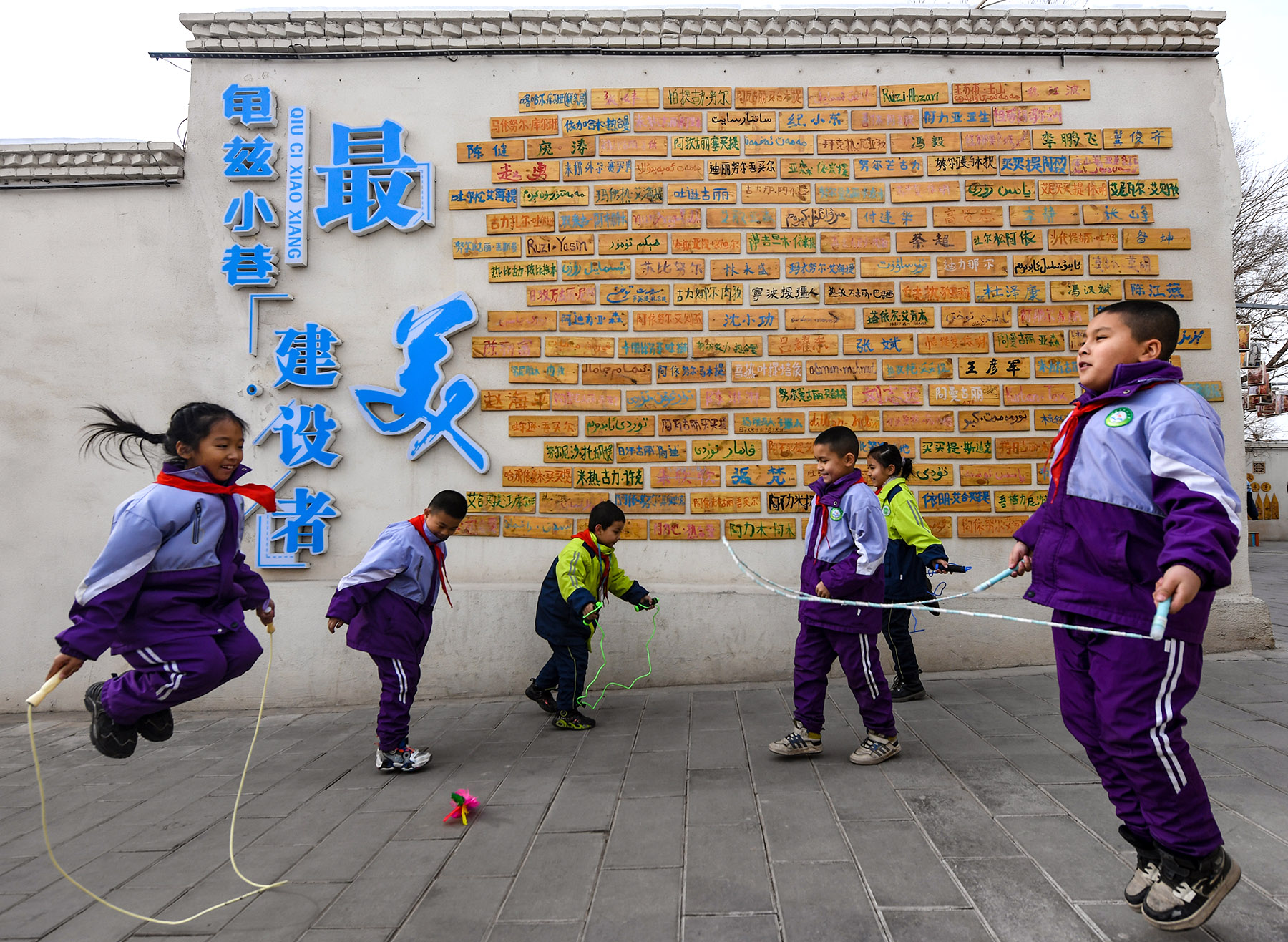
Women empowered
Due to the renovation of the alley and tourism boost, women living in the area are enjoying greater opportunities. A workshop designed for women to incubate their businesses has been established in the alley.
Yang, the publicity officer, said the workshop aims to help women balance family responsibilities with financial independence. "In the past, many women in our subdistrict just stayed at home raising children," said Yang. "Now they can do both — earn money and support their families."
Nurgul Memet, a tailor with 28 years' experience, moved her shop from a nearby street to the new workshop in March.
The relocation has nearly doubled her income — from 15,000 yuan a month to nearly 30,000 yuan.
The 48-year-old recognized the financial prospects of rising tourist numbers. She employs and teaches about 50 local women how to make products such as dresses, hats and bags using Atlas silk, a traditional Uygur textile characterized by bright colors and exquisite intricate patterns.
"They can come anytime for training," she said. "After that, they can either work from home or at my shop. We calculate wages per piece, and some can earn up to 5,000 yuan a month."
Another business in the workshop is Ma Xiaoyan's intangible cultural heritage studio.
Ma wears a traditional qipao, and her studio is filled with over 80 different traditional handcrafted items — from embroidery and dyed fans to Atlas silk-related products, such as refrigerator magnets.
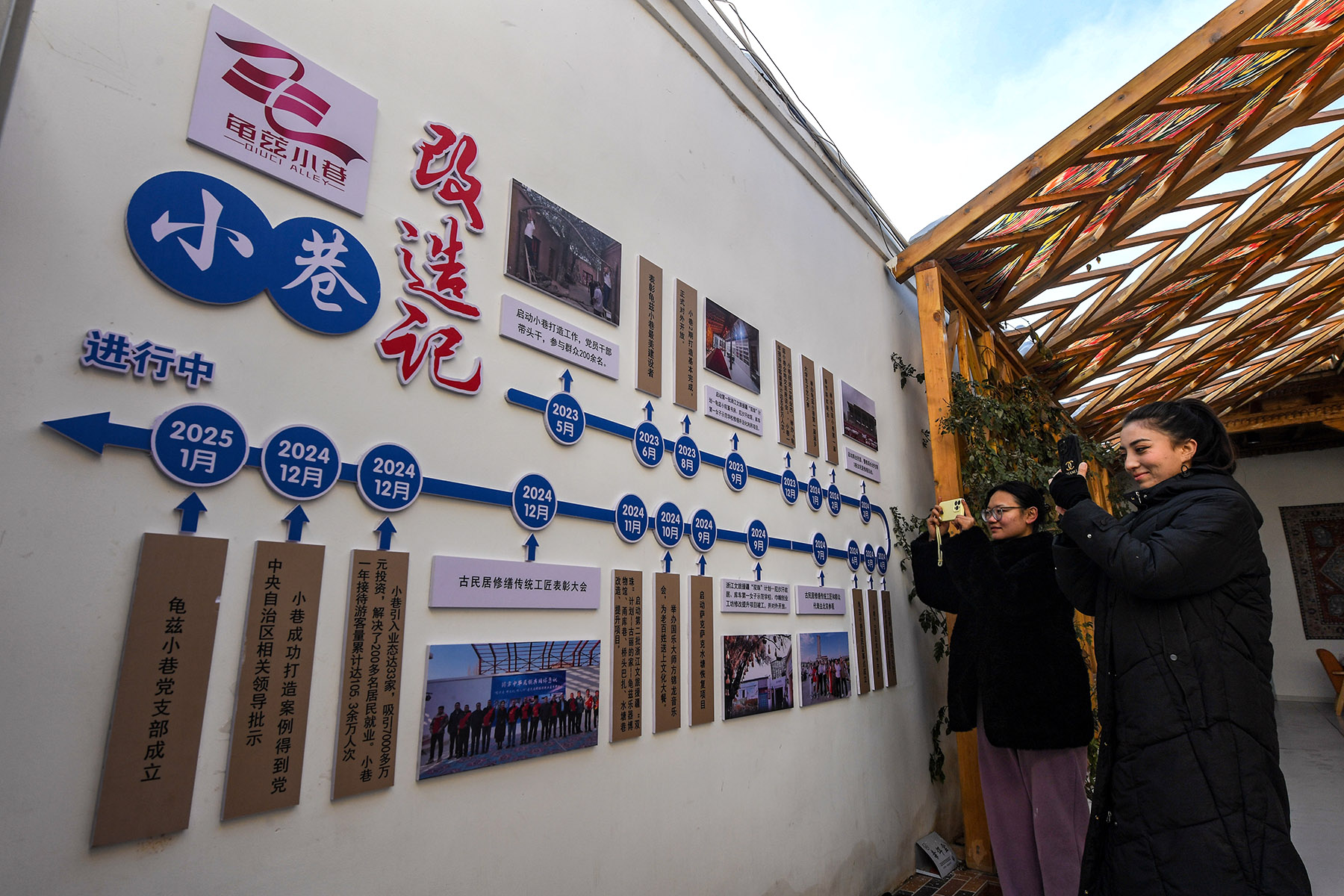
Tourists can purchase products and also learn how to make them under Ma's guidance, she said. The store's gift packaging are made of Atlas silk and features elements such as traditional kites and lotus patterns, blending the culture of Xinjiang with other regions. "I want to bring our traditional culture closer to more people," she said.
Ma resigned from her job in 2021 after working in education for 16 years, and went to Beijing to study and improve her knowledge about intangible cultural heritage.
She fulfilled her dream, in May when she opened her studio in the workshop. She also organizes intangible cultural heritage events in local cultural venues, libraries and museums.
Ma expects more people to visit the alley to experience the slow pace of life and learn about its culture.
ALSO READ: Xinjiang's fur skiers find fame in Asian winter games
"Now, the streets are clean, and the walls are colorful. After dinner, many local people come here for a walk, enjoy the colorful buildings and have tea — it's very relaxing," she said.
The carved doors and windows, historical homes, murals and melodies echoing through the alley, are living proof that tradition and modernity can coexist and thrive together.
"I think Xinjiang's tourism will only get better," Wang Xinyu said. "It may be remote compared with other inland provinces, but with more people moving here and more businesses starting, I truly believe it has a bright future."
Contact the writer at zhoujin@chinadaily.com.cn


